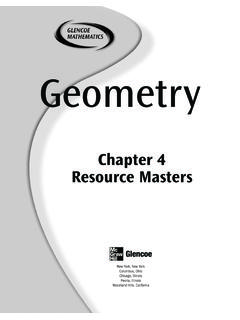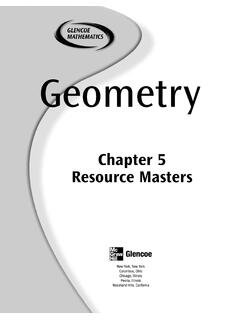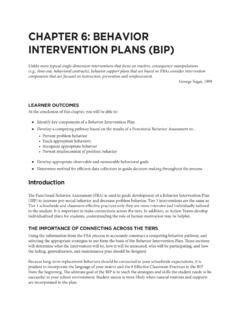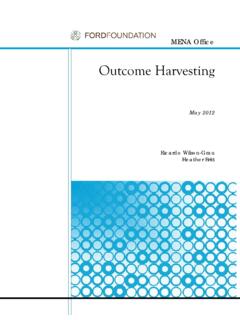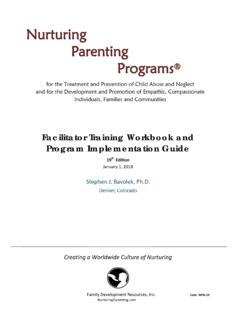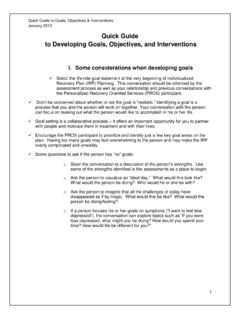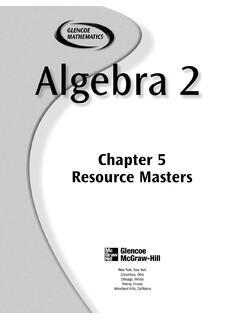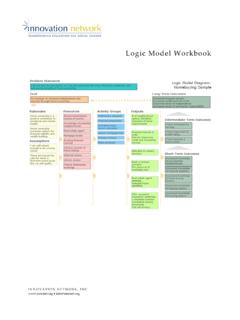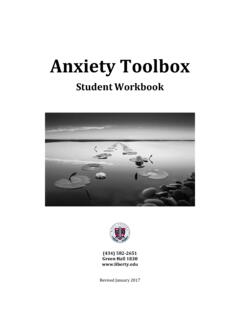Transcription of A Pathway to - Math Equity Toolkit
1 A Pathway to Equitable Math Instruction Dismantling Racism in Mathematics InstructionExercises for educators to reflect on their own biases to transform their instructional practice MAY 20211 STRIDE1 Dismantling Racism in Mathematics InstructionThis tool provides teachers an opportunity to examine their actions, beliefs, and values around teaching math-ematics. The framework for deconstructing racism in mathematics offers essential characteristics of antiracist math educators and critical approaches to dismantling white supremacy in math classrooms by making visi-ble the toxic characteristics of white supremacy culture (Jones and Okun 2001; dismantling Racism 2016) with respect to math. Building on the framework, teachers engage with critical praxis in order to shift their instruc-tional beliefs and practices towards antiracist math ed-ucation.
2 By centering antiracism, we model how to be antiracist math educators with accountability. While primarily for math educa-tors, this text advocates for a collective approach to dismantling white supremacy. This school-wide approach ensures that anti-racist work is not left alone to one individual ( , math teacher or the director of Equity ), but to enlist the support and voice of all stakehold-ers in the school ecosystem. Teachers should use this work-book to self-reflect on individual practices in the classroom and identify next steps in their anti-racist journey as a math educator. Leaders and coaches should use the framework during observa-tions and walkthroughs, annotat-ing the behaviors and providing targeted feedback. Administrators should examine programs and policies and how white supremacy impacts student outcomes ( , tracking, course selection, intervention rosters).
3 In addition, they can hold teachers accountable for completing the activities in this TO USE THIS TOOLCONTENT DEVELOPERSS onia Michelle Cintron Math Content Specialist UnboundEdDani Wadlington Director of Mathematics Education Quetzal Education ConsultingAndre ChenFeng Student Education at Claremont Graduate UniversityFEEDBACK ADVISORSK yndall Brown Executive Director California Mathematics ProjectDenise Green Educational Administrator, Mathematics Monterey County Office of EducationManuel Buenrostro Policy Associate Californians TogetherAna Benderas Director of Humanities Education Quetzal Education ConsultingTHEMEST eacher BeliefsGUIDING PRINCIPLESC ulturally relevant curricula and practices designed to increase access for students of color. Promoting antiracist mathematics 12 STRIDE 1 : Dismantling Racism in Mathematics InstructionA Pathway to Equitable Math Instruction3 STRIDE 1 : Dismantling Racism in Mathematics InstructionA Pathway to Equitable Math InstructionLETTER TO READER 4 DECONSTRUCTING RACISM IN MATHEMATICS INSTRUCTION 6 Dismantling White Supremacy In Math Classrooms Characteristics Of Antiracist Math Educators CRITICAL PRAXIS 10 Shifting Toward Antiracist Math Education CALENDAR 11 PROCESS 11 BEFORE THE SCHOOL YEAR 12 What Are My Expectations For The Year?
4 SEPTEMBER 15 Who Are My Students?OCTOBER 22 What Am I Teaching? NOVEMBER 29 How Am I Authentically Including Black, Latinx, and Multilingual Students? DECEMBER 36 How Did I Learn Math? JANUARY 43 How Do I Teach Math? FEBRUARY 50 How Do I Track What Students Know? MARCH 57 How Do I Engage Students In Learning? APRIL 64 How Can I Facilitate Deeper Understanding? MAY 71 How Do I Dismantle Power Structures In The Classroom? END OF THE SCHOOL YEAR 78 What Are My Expectations For Next Year? REFERENCES 81 Table of Contents4 STRIDE 1 : Dismantling Racism in Mathematics InstructionA Pathway to Equitable Math InstructionThis workbook provides teachers an opportunity to examine their actions, beliefs, and values around teaching mathematics. The framework for deconstructing racism in mathematics offers essential characteristics of antiracist math educators and critical approaches to dismantling white supremacy in math classrooms by making visible the toxic characteristics of white supremacy culture (Jones and Okun 2001; dismantlingRacism 2016) with respect to math.
5 Building on the framework, teachers engage with critical praxis1 in order to shift their instructional beliefs and practices toward antiracist math education. By centering antiracism, we model how to be antiracist math educators with FOR USE While primarily for math educators, this text advocates for a collective approach to dismantling white supremacy. This school-wide approach ensures that antiracist work is not left alone to one individual ( , math teacher or the director of Equity ), but to enlist the support and voice of all stakeholders in the school ecosystem. Teachers should use this workbook to self-reflect on individual practices in the classroom and identify next steps in their antiracist journey as a math educator. Leaders and coaches should use the framework during observations and walkthroughs, annotating the behaviors and providing targeted feedback. Administrators should examine programs and policies and how white supremacy impacts student outcomes ( , tracking, course selection, intervention rosters).
6 In addition, they can hold teachers accountable for completing the activities in this to Reader1 Critical praxis: Ernest Morrell and Jeff Duncan-Andrade acknowledge that critical praxis in the classroom involves a continuous, self-reflective cycle between theory and action as follows: (a) identifying a problem, (b) researching the problem, (c) developing a collective plan of action to address that problem, (d) implementing the collective plan of action, and (e) evaluating the action and assessing its efficacy in reexamining the state of the problem. Thus, critical praxis involves a constant path of evaluating thought with action, theory with practice, in the effort to gain a higher consciousness for positive change upon the world. (McLaren, Ryoo, Crawford, & Moreno, 2010, p. 151). 5 STRIDE 1 : Dismantling Racism in Mathematics InstructionA Pathway to Equitable Math InstructionWhite supremacy culture is the idea (ideology) that White people and the ideas, thoughts, beliefs, and actions of white people are superior to People of Color and their ideas, thoughts, beliefs, and actions.
7 [from Sharon Martinas and the Challenging White Supremacy Workshop] Culture is powerful precisely because it is so present and at the same time so very difficult to name or identify. The characteristics of white supremacy culture are damaging because they are used as norms and standards without being pro-actively named or chosen by the group. They are damaging to both people of color and to white people. Organizations that are people of color-led or a majority people of color can also demonstrate many damaging characteristics of white supremacy culture. (Jones and Okun 2001)NOTES ON TERMS The terms used in the engagement section of this resource are ideas presented in the dismantlingRacism workbook (2016) notebook, grounded on the work of Jones and Okun (2001). It is important to read this article first to fully understand the terms that are identified as characteristics of white supremacy culture in organizations.
8 We contextu-alize these ideas into the math classroom to make visible how white supremacy culture plays out in these spaces. As a visual indicator, we italicize the terms used to identify white supremacy characteristics as defined by Jones and Okun (2001). They are as follows: Perfectionism Sense of Urgency Defensiveness Quantity Over Quality Worship of the Written Word Paternalism Either/Or Thinking Power Hoarding Fear of Open Conflict Individualism Only One Right Way Progress is Bigger, More Objectivity Right to Comfort 6 STRIDE 1 : Dismantling Racism in Mathematics InstructionA Pathway to Equitable Math Instruction We live in a toxic culture that affects us all; one dynamic of the culture is that we are discouraged from seeing it. One of our tasks is to learn to see our culture and how it teaches us to make normal that which is not and should never be normal.
9 (dismantlingRacism 2016)7 STRIDE 1 : Dismantling Racism in Mathematics InstructionA Pathway to Equitable Math InstructionWhite supremacy culture infiltrates math classrooms in everyday teacher actions. Coupled with the beliefs that underlie these actions, they perpetuate educational harm on Black, Latinx, and multilingual students, denying them full access to the world of table below identifies the ways in which white supremacy shows up in math Racism in Mathematics InstructionENGAGING AND SUPPORTING ALL STUDENTS IN LEARNING(CSTP 1)CREATING AND MAINTAINING EFFECTIVE ENVIRONMENTS FOR STUDENT LEARNING (CSTP 2)UNDERSTANDING AND ORGANIZING SUBJECT MATTER FOR STUDENT LEARNING (CSTP 3)PLANNING INSTRUCTION AND DESIGNING LEARNING EXPERIENCES FOR ALL STUDENTS(CSTP 4)ASSESSING STUDENTS FOR LEARNING(CSTP 5)DISMANTLING WHITE SUPREMACY CULTURE IN MATH CLASSROOMSWe see white supremacy culture show up in the mathematics classroom even as we carry out our professional responsibilities outlined in the California Standards for the Teaching Profession (CSTP).
10 Using CSTPas a framework, we see white supremacy culture in the mathematics classroom can show up when: There is a greater focus on getting the "right" answer than understanding concepts and reasoning. Independent practice is valued over teamwork or collaboration. Contrived word problems are valued over the math in students' lived experiences. Students are tracked (into courses/pathways and within the classroom). Participation structures reinforce dominant ways of being. Curriculum developers and teachers enculturated in the USA teach mathematics the way they learned it without critical reflection. Preconceived expectations are steeped in the dominant culture. Mistakes are addressed as failure rather than as opportunities to learn. Control of classrooms is valued over student's agnecy over their learning. Math is taught in a linear fashion and skills are taught sequentially, without consideration of prerequisite knowledge.
